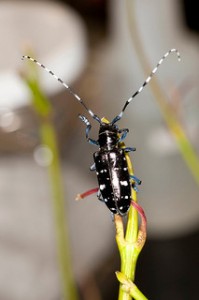Earlier this week, American Forests joined the Animal and Plant Health Inspection Service (APHIS) to spread awareness about an invasive pest destroying hardwood trees, especially maples: the Asian longhorned beetle (ALB).
The beetle was first found in the U.S. in 1996 and is thought to have been transported in wooden packing material from Asia. They are known to infest 13 different species of trees. The most threatened tree is the maple. This is problematic to those who rely on harvesting its syrup and local ecotourism for those who enjoy viewing their beautiful fall foliage. Other trees infected by these pests are poplars, birch, ash, mimosa, willows and elms.

When this beetle burrows into a tree, there is no saving it, as the beetle starves trees by disconnecting tree tissues that transport nutrients and water. The beetle has been found in various states throughout the country, including New Jersey, Ohio, Massachusetts, New York and Illinois, and many fear that if ALB is left unchecked, it could spread to more northeastern states and even Canada. There is good news, though, as two states — New Jersey and Illinois — have been able to completely eradicate the bug from their trees. The key to the success is in early detection of an infestation, which allows a tree to be removed before ALB can spread to the tree’s neighbors. That’s where Tree Check Month comes into play.
APHIS has declared August as Tree Check Month because it is when the beetles become most active, meaning you are most likely to spot them. The concept is simple: If you’re outdoors this August, take 10 minutes to look over your trees and make sure they are not being eaten by ALB — don’t worry the pest is harmless to people and pets.
What should you be looking for?

- Dime-sized exit holes
- Shallow scars in the bark
- Sawdust-like material on the ground or on branches
- Dead branches
- Sap seeping from wounds
Of course, the most obvious clue would be actually seeing the beetle. It is an inch and a half long with a black body with white spots on it. They have long antennas that are black and white and six legs that may be light blue. In addition to trees, the beetle can also be found on walls, outdoor furniture, cars, sidewalks and often are caught in pool filters.
Remember that one of the most common ways that invasive pests like ALB spread is by moving firewood, so only use local firewood and never take it with you.
Help us stop the spread of ALB by taking just 10 minutes to look over trees in your yard or favorite park. Together, we can rid our forests, lawns and parks of these unwanted pests.
P.S. For more tips and resources on ALB, visit APHIS’ website dedicated to ALB.